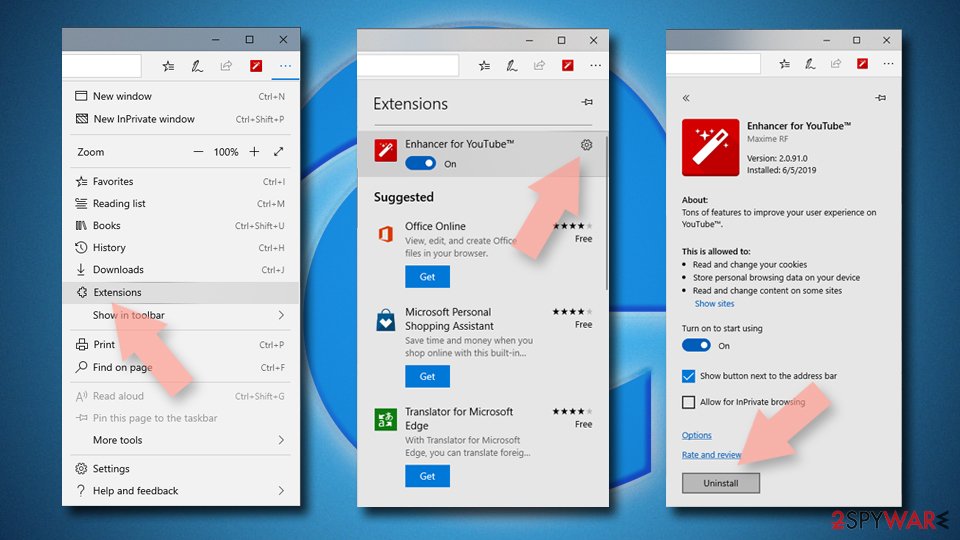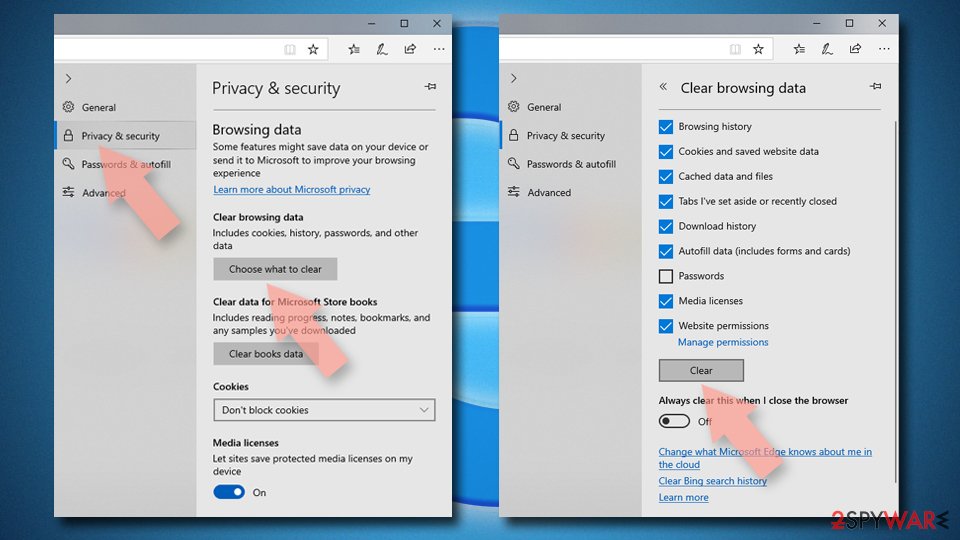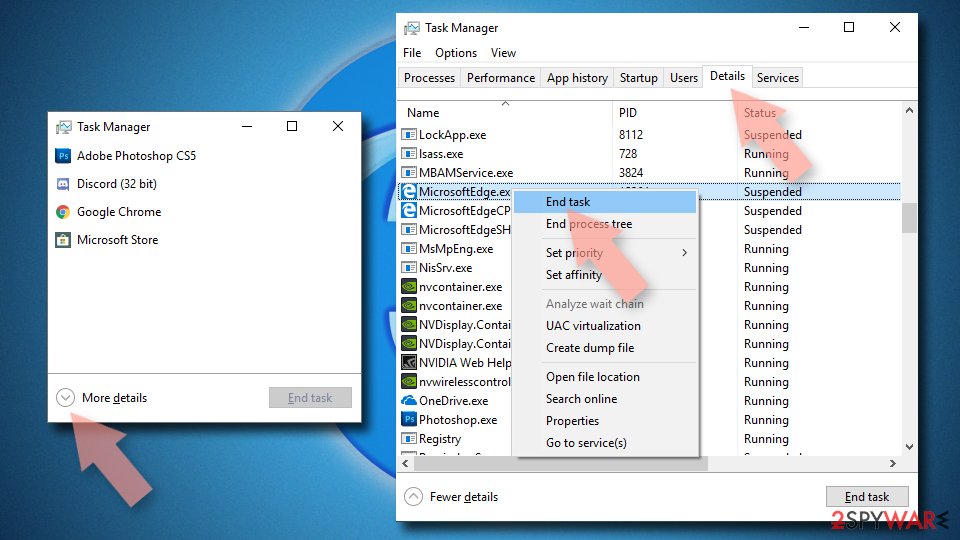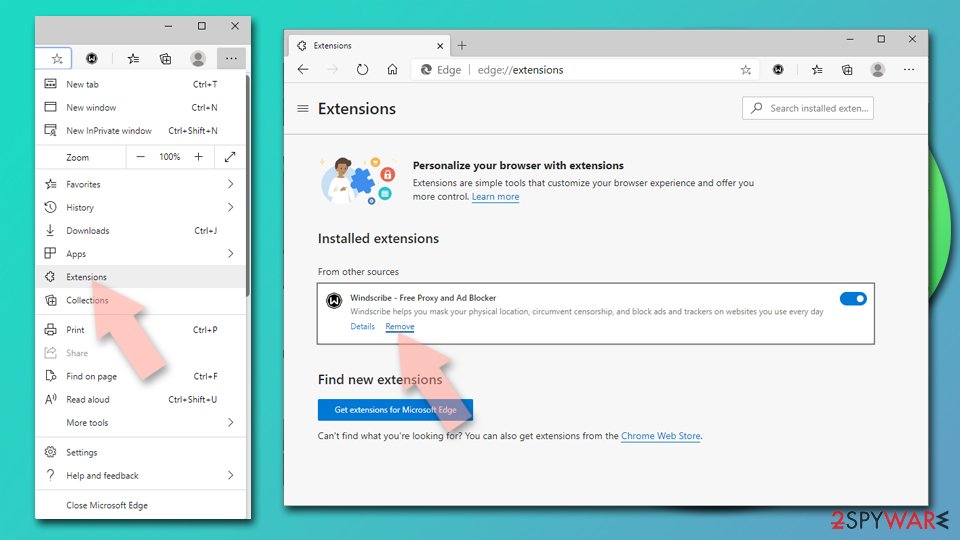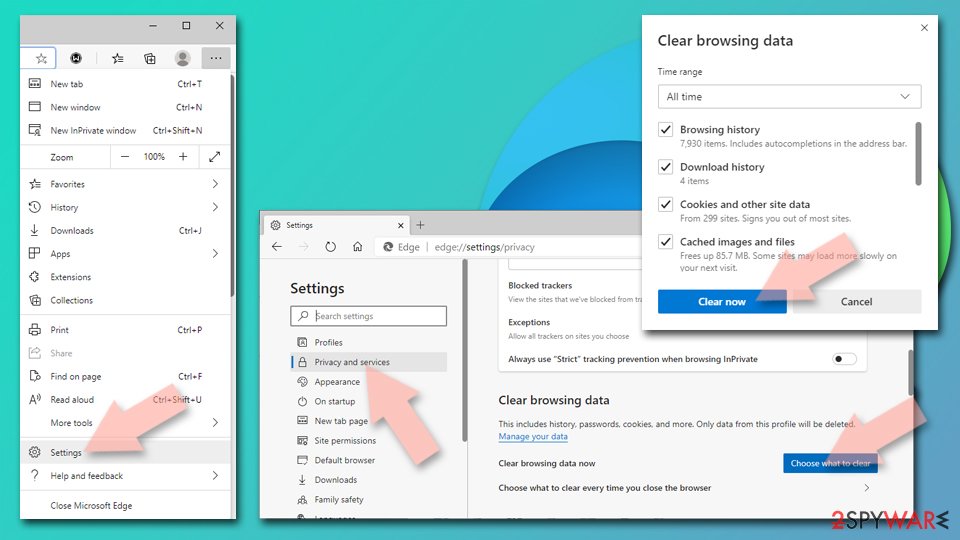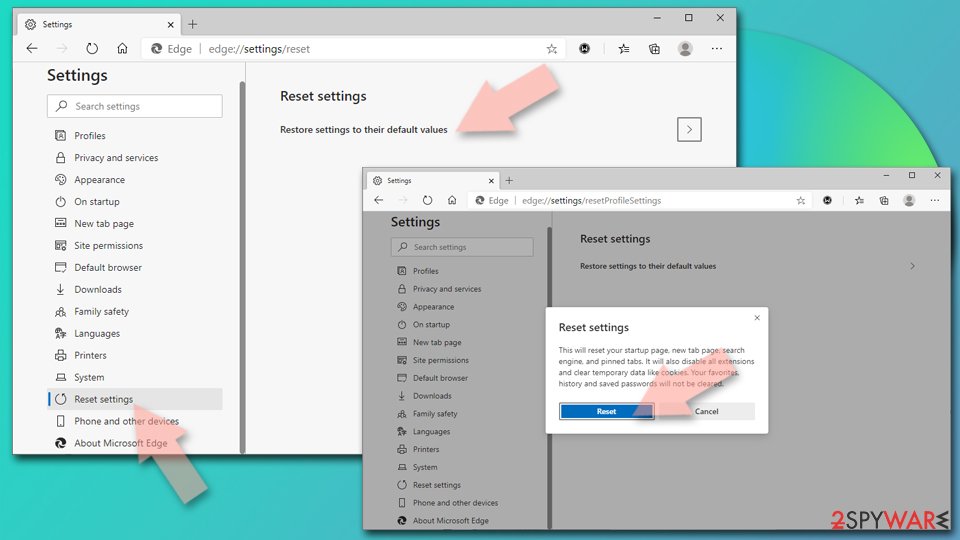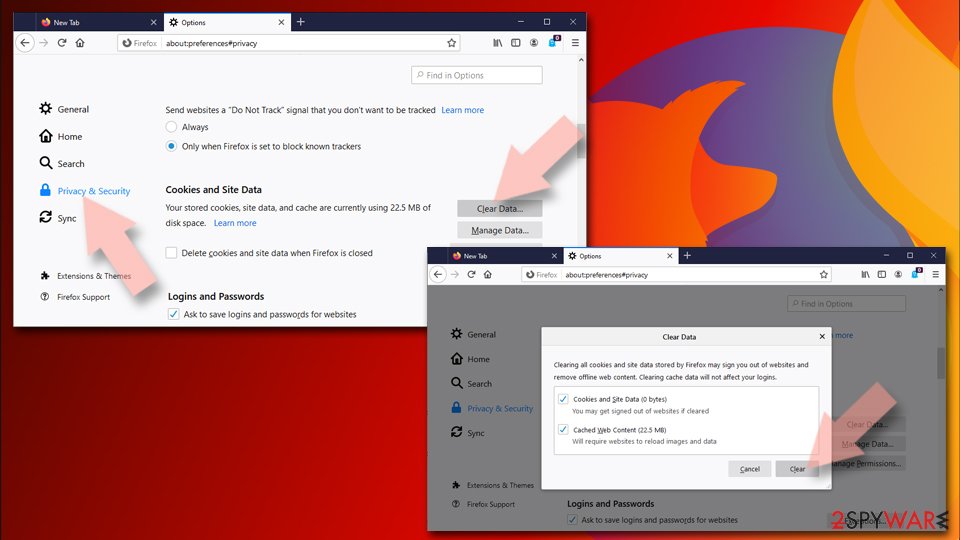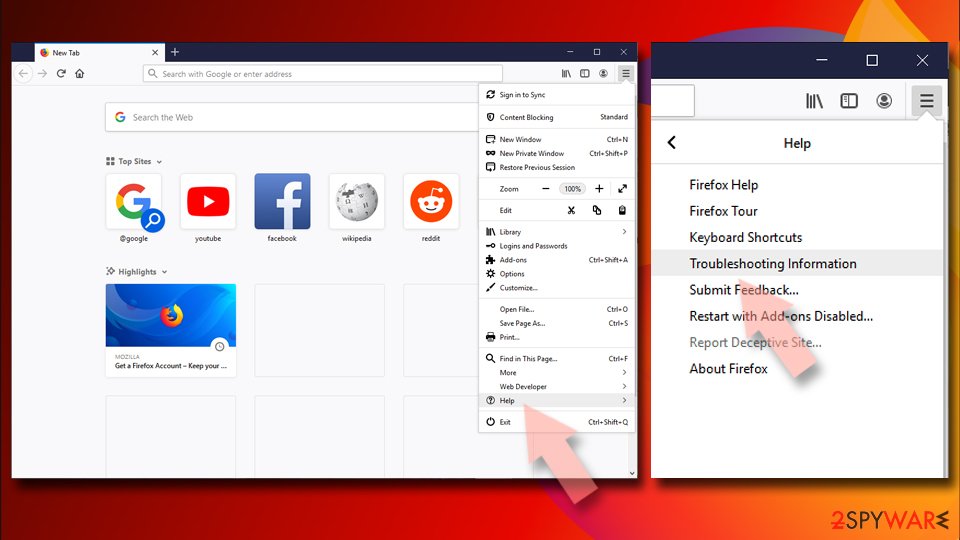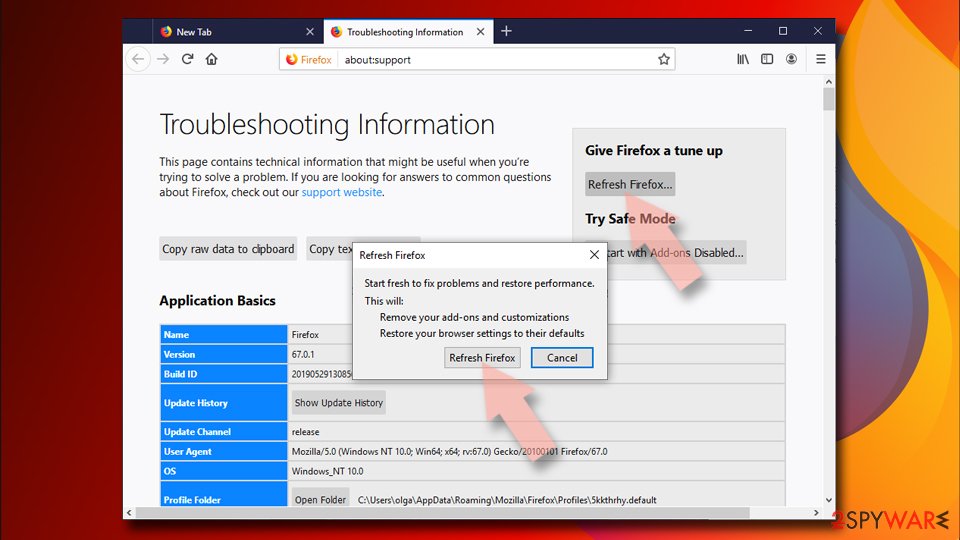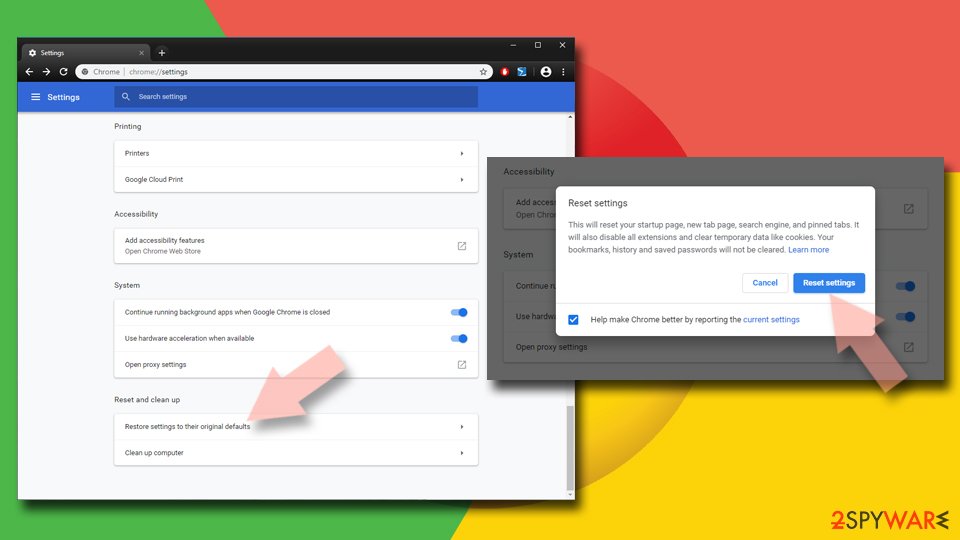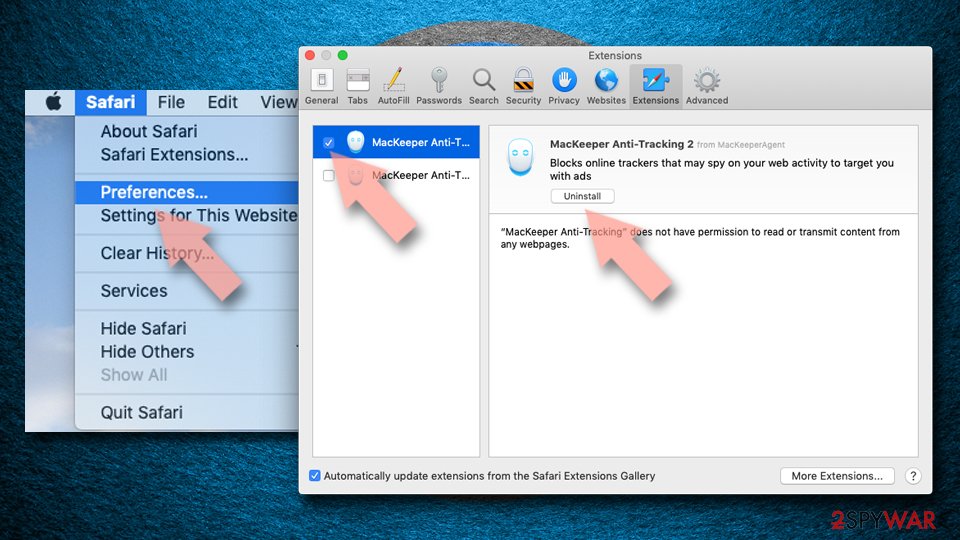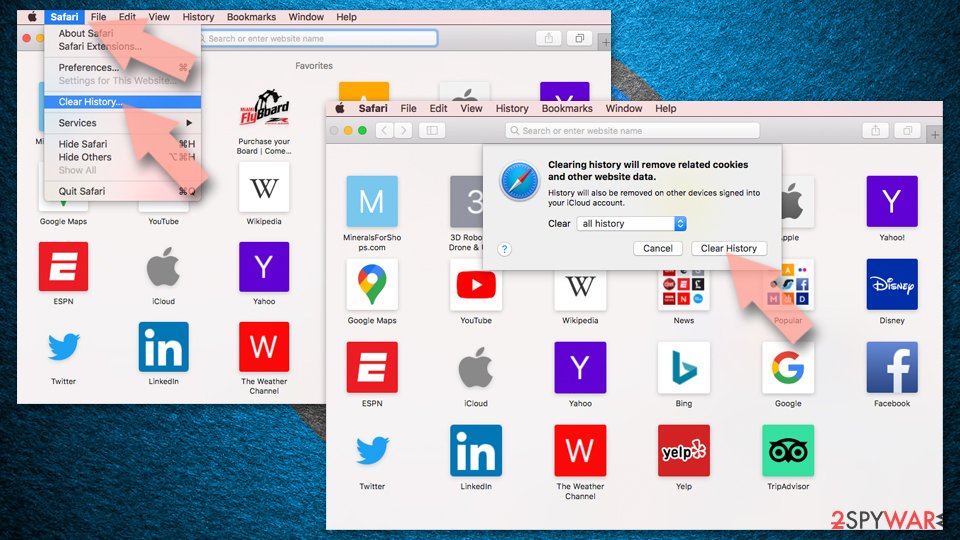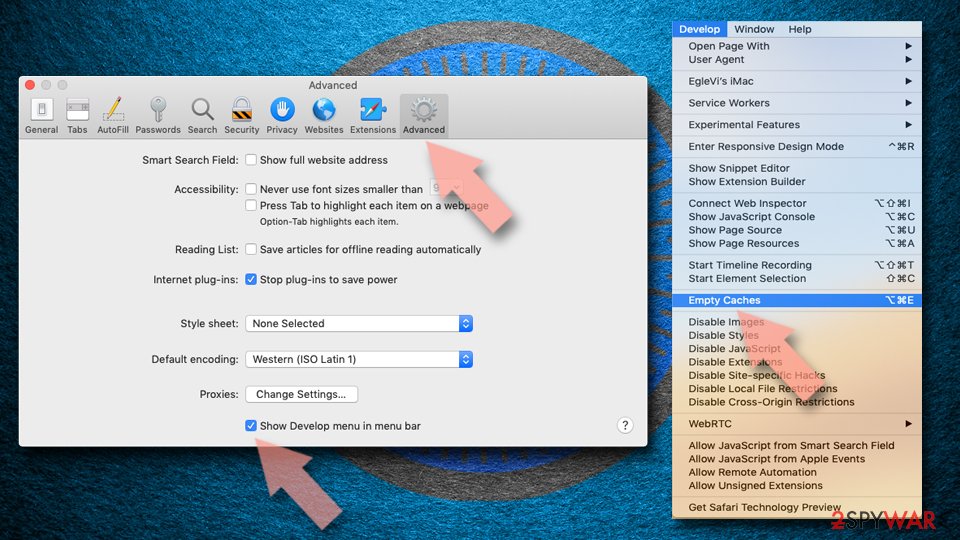SearchSpace (Improved Instructions) - Free Guide
SearchSpace Removal Guide
What is SearchSpace?
SearchSpace is a browser hijacker that reads your browsing history
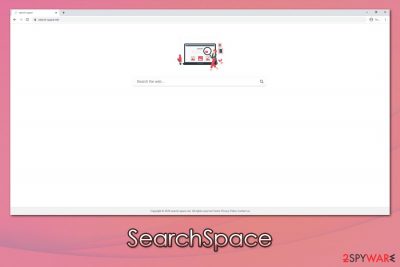
SearchSpace, otherwise known as SearchSpace Search Manager, is a browser extension that is advertised as a tool that can enhance your browsing experience, promising the best search results. Just like many other browser hijackers,[1] it can be downloaded from the official sources (such as Google Web Store), although it can also infiltrate the system via software bundles downloaded from third-party websites or after being tricked by an ad.
SearchSpace is a very typical browser hijacker that provides no benefits to users, but instead, alters the search results, displays sponsored ads, changes web browser settings, collects information about users' web browsing habits and even shares it with search providers, business partners, and other affiliates for marketing purposes.
| Name | SearchSpace |
| Type | Browser hijacker, potentially unwanted program |
| Infiltration | The browser extension can be downloaded via official sources such as Google Web Store, although many might find it installed along with freeware applications downloaded from third-party websites |
| Symptoms |
|
| Risks | Installation of other unwanted software, privacy risks, exposure to online scams, etc. |
| Removal | To uninstall the extension, right-click on its icon. However, if you still see browser redirects and ads, there might more PUPs installed on your system – check out the manual elimination guide below |
| Optimization | For best results, we recommend scanning the system with FortectIntego |
While browser hijackers like SearchSpace are not considered a major security threat, their presence should not be ignored, especially if the access was gained without your consent. There are thousands of similar tools, namely, Mysupertab, Srchus.xyz, Optimum Search, CapitaSearch, and many others. Some of these apps can be presented as browser extensions, while others are installed on Mac or Windows OS. In such a case, the SearchSpace removal process would differ.
Many of these applications work on a simple principle: they often promise users a better browsing experience or include some type of functionality, such as changing background picture, or embedded links to well-known sites like YouTube. However, these browser tweaks are generally worthless and are present in order to make users believe that the PUP is there to bring the benefits. SearchSpace is one of such extensions.
Once inside the system, SearchSpace hijack will be apparent almost straight away, as the homepage of the Google Chrome or another web browser will be appended with a search-space.net homepage and new tab address. In the middle, users will see a customized search engine applied. While it may seem unique, it does not use its own engine and redirects all searches to a well-known provider, such as Google.com.
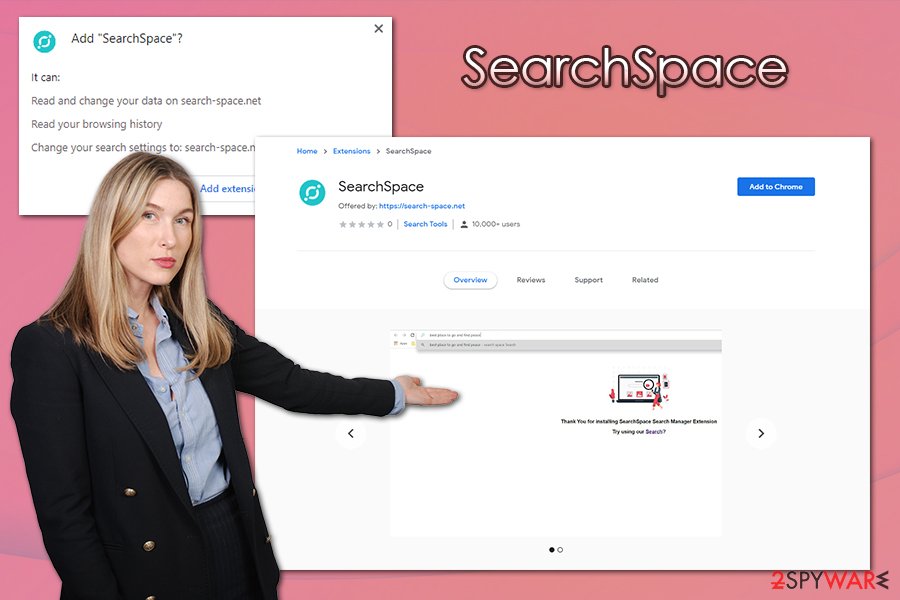
However, the results produced via the SearchSpace search engine are fake, as users would be presented with sponsored links at the top. Since most users click on the first result, it allows the app developers to promote sponsored websites which might not be the best of quality, or also be irrelevant to the search query. This way, affiliated websites boost their traffic, and SearchSpace virus authors receive monetary payouts each time a user clicks on a sponsored link.
Another reason why you should remove SearchSpace is its information tracking practices. Here is some of the data that can be tracked by the hijacker's developers:
- Bookmarks of your web browser;
- Search queries made;
- Accessed web pages;
- Interaction with advertisements;
- Session duration, etc.
Unfortunately, much of the data can also be disclosed to third parties and partners, as explained in the Privacy Policy:[2]
We may disclose or share this information with third parties as specified below and solely if applicable. We collect the following Non-Personal Information from you when you access or use the Services: the type of browser you are using as well as operating system, your time zone, the date and time you access the Service, screen resolution, browser and operating system language, default search, country, etc.
All in all, we suggest you get rid of useless browser extensions that feed you ads, share your information, and do not provide any benefits for it. If you already got rid of the SearchSpace hijack by terminating the extension and you still see suspicious browser activities such as sponsored ads, there might be that there are more potentially unwanted programs installed on your system.
PUPs often travel in bundles, so multi-infection is not a rare occurrence – especially if the installation process of freeware is done carelessly. Therefore, we highly recommend checking our instructions below and scanning the device with anti-malware software to ensure no malicious software managed to get in. Also, you can reset your web browsers in an attempt to terminate ads, and fix virus damage with tools like FortectIntego.
Learn how to recognize and avoid potentially unwanted programs
Even though potentially unwanted programs are not considered malware, most of the reputable security vendors now provide PUP detection feature. Initially called spyware, adware and other potentially unwanted applications have become a real problem to users and security community – Macs especially suffering from constant adware attacks. While in most cases, PUPs serve as an inconvenience that spams users with ads and can be eliminated easily, some programs were highly associated with malware or even put users' security at risk (such was the case with Lenovo's Superfish adware scandal).[3]
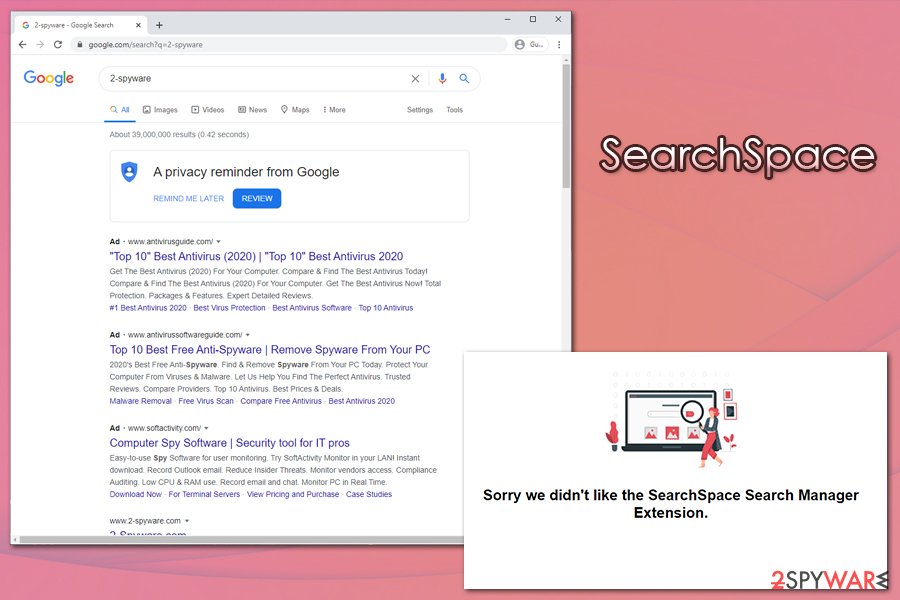
Potentially unwanted applications clutter your computer, serve you ads, and bring no real benefits. Thus, learn to avoid them in the first place by following these tips from experts:[4]
- When encountering a pop-up message on the internet claiming that your computer needs updated or is infected with malware and you need to download/install something – ignore it, it is a scam that may result even in malware infections;
- If possible, always choose official sources for your downloads;
- If using third-party sites to download freeware, always ensure you press the correct “Download” button, as many fake buttons are used in order to make you download scamware or malware;
- Before installing an app, you have never heard of, check its reviews online;
- When prompted, always choose Advanced or Custom installation settings instead of Quick setup;
- Remove all the ticks next to video converters, browser extensions, media players, and other useless software;
- Install a security application that would warn you about potentially unwanted programs.
Uninstall SearchSpace and use legitimate search tools instead
If you installed PUPs unintentionally, there is a high chance there that there are other unwanted apps on your system. However, you should first take care of SearchSpace removal – simply right-click on the extension for the purpose. Now, you should access the full list of the installed apps and check for anything suspicious, such as unknown video games, media players, driver updaters, and similar tools. Basically, you should get rid of everything you do not recognize.
After you remove SearchSpace and all the other unknown apps from your system, we also recommend you perform a full system scan with powerful anti-malware software. Note that, in case the computer is infected with malware that is designed to stay undetected, you are highly unlikely to experience any symptoms. Therefore, using automatic removal tools is important, as they can detect and eliminate all the malicious components that could be present on the system.
Also, in case you did find unwanted apps besides the SearchSpace virus on your machine, we highly suggest you reset the web browser settings, as explained below, to eliminate all the trackers and other unwanted settings.
You may remove virus damage with a help of FortectIntego. SpyHunter 5Combo Cleaner and Malwarebytes are recommended to detect potentially unwanted programs and viruses with all their files and registry entries that are related to them.
Getting rid of SearchSpace. Follow these steps
Uninstall from Windows
To get rid of potentially unwanted apps from Windows, follow these steps:
Instructions for Windows 10/8 machines:
- Enter Control Panel into Windows search box and hit Enter or click on the search result.
- Under Programs, select Uninstall a program.

- From the list, find the entry of the suspicious program.
- Right-click on the application and select Uninstall.
- If User Account Control shows up, click Yes.
- Wait till uninstallation process is complete and click OK.

If you are Windows 7/XP user, proceed with the following instructions:
- Click on Windows Start > Control Panel located on the right pane (if you are Windows XP user, click on Add/Remove Programs).
- In Control Panel, select Programs > Uninstall a program.

- Pick the unwanted application by clicking on it once.
- At the top, click Uninstall/Change.
- In the confirmation prompt, pick Yes.
- Click OK once the removal process is finished.
Delete from macOS
macOS users should perform the following actions if they want to terminate suspicious apps:
Remove items from Applications folder:
- From the menu bar, select Go > Applications.
- In the Applications folder, look for all related entries.
- Click on the app and drag it to Trash (or right-click and pick Move to Trash)

To fully remove an unwanted app, you need to access Application Support, LaunchAgents, and LaunchDaemons folders and delete relevant files:
- Select Go > Go to Folder.
- Enter /Library/Application Support and click Go or press Enter.
- In the Application Support folder, look for any dubious entries and then delete them.
- Now enter /Library/LaunchAgents and /Library/LaunchDaemons folders the same way and terminate all the related .plist files.

Remove from Microsoft Edge
Delete unwanted extensions from MS Edge:
- Select Menu (three horizontal dots at the top-right of the browser window) and pick Extensions.
- From the list, pick the extension and click on the Gear icon.
- Click on Uninstall at the bottom.

Clear cookies and other browser data:
- Click on the Menu (three horizontal dots at the top-right of the browser window) and select Privacy & security.
- Under Clear browsing data, pick Choose what to clear.
- Select everything (apart from passwords, although you might want to include Media licenses as well, if applicable) and click on Clear.

Restore new tab and homepage settings:
- Click the menu icon and choose Settings.
- Then find On startup section.
- Click Disable if you found any suspicious domain.
Reset MS Edge if the above steps did not work:
- Press on Ctrl + Shift + Esc to open Task Manager.
- Click on More details arrow at the bottom of the window.
- Select Details tab.
- Now scroll down and locate every entry with Microsoft Edge name in it. Right-click on each of them and select End Task to stop MS Edge from running.

If this solution failed to help you, you need to use an advanced Edge reset method. Note that you need to backup your data before proceeding.
- Find the following folder on your computer: C:\\Users\\%username%\\AppData\\Local\\Packages\\Microsoft.MicrosoftEdge_8wekyb3d8bbwe.
- Press Ctrl + A on your keyboard to select all folders.
- Right-click on them and pick Delete

- Now right-click on the Start button and pick Windows PowerShell (Admin).
- When the new window opens, copy and paste the following command, and then press Enter:
Get-AppXPackage -AllUsers -Name Microsoft.MicrosoftEdge | Foreach {Add-AppxPackage -DisableDevelopmentMode -Register “$($_.InstallLocation)\\AppXManifest.xml” -Verbose

Instructions for Chromium-based Edge
Delete extensions from MS Edge (Chromium):
- Open Edge and click select Settings > Extensions.
- Delete unwanted extensions by clicking Remove.

Clear cache and site data:
- Click on Menu and go to Settings.
- Select Privacy, search and services.
- Under Clear browsing data, pick Choose what to clear.
- Under Time range, pick All time.
- Select Clear now.

Reset Chromium-based MS Edge:
- Click on Menu and select Settings.
- On the left side, pick Reset settings.
- Select Restore settings to their default values.
- Confirm with Reset.

Remove from Mozilla Firefox (FF)
If the ads continue after you eliminated SearchSpace, you should reset Firefox as explained below:
Remove dangerous extensions:
- Open Mozilla Firefox browser and click on the Menu (three horizontal lines at the top-right of the window).
- Select Add-ons.
- In here, select unwanted plugin and click Remove.

Reset the homepage:
- Click three horizontal lines at the top right corner to open the menu.
- Choose Options.
- Under Home options, enter your preferred site that will open every time you newly open the Mozilla Firefox.
Clear cookies and site data:
- Click Menu and pick Settings.
- Go to Privacy & Security section.
- Scroll down to locate Cookies and Site Data.
- Click on Clear Data…
- Select Cookies and Site Data, as well as Cached Web Content and press Clear.

Reset Mozilla Firefox
If clearing the browser as explained above did not help, reset Mozilla Firefox:
- Open Mozilla Firefox browser and click the Menu.
- Go to Help and then choose Troubleshooting Information.

- Under Give Firefox a tune up section, click on Refresh Firefox…
- Once the pop-up shows up, confirm the action by pressing on Refresh Firefox.

Remove from Google Chrome
To reset Google Chrome after a PUP infection, follow these instructions:
Delete malicious extensions from Google Chrome:
- Open Google Chrome, click on the Menu (three vertical dots at the top-right corner) and select More tools > Extensions.
- In the newly opened window, you will see all the installed extensions. Uninstall all the suspicious plugins that might be related to the unwanted program by clicking Remove.

Clear cache and web data from Chrome:
- Click on Menu and pick Settings.
- Under Privacy and security, select Clear browsing data.
- Select Browsing history, Cookies and other site data, as well as Cached images and files.
- Click Clear data.

Change your homepage:
- Click menu and choose Settings.
- Look for a suspicious site in the On startup section.
- Click on Open a specific or set of pages and click on three dots to find the Remove option.
Reset Google Chrome:
If the previous methods did not help you, reset Google Chrome to eliminate all the unwanted components:
- Click on Menu and select Settings.
- In the Settings, scroll down and click Advanced.
- Scroll down and locate Reset and clean up section.
- Now click Restore settings to their original defaults.
- Confirm with Reset settings.

Delete from Safari
Remove unwanted extensions from Safari:
- Click Safari > Preferences…
- In the new window, pick Extensions.
- Select the unwanted extension and select Uninstall.

Clear cookies and other website data from Safari:
- Click Safari > Clear History…
- From the drop-down menu under Clear, pick all history.
- Confirm with Clear History.

Reset Safari if the above-mentioned steps did not help you:
- Click Safari > Preferences…
- Go to Advanced tab.
- Tick the Show Develop menu in menu bar.
- From the menu bar, click Develop, and then select Empty Caches.

After uninstalling this potentially unwanted program (PUP) and fixing each of your web browsers, we recommend you to scan your PC system with a reputable anti-spyware. This will help you to get rid of SearchSpace registry traces and will also identify related parasites or possible malware infections on your computer. For that you can use our top-rated malware remover: FortectIntego, SpyHunter 5Combo Cleaner or Malwarebytes.
How to prevent from getting browser hijacker
Choose a proper web browser and improve your safety with a VPN tool
Online spying has got momentum in recent years and people are getting more and more interested in how to protect their privacy online. One of the basic means to add a layer of security – choose the most private and secure web browser. Although web browsers can't grant full privacy protection and security, some of them are much better at sandboxing, HTTPS upgrading, active content blocking, tracking blocking, phishing protection, and similar privacy-oriented features. However, if you want true anonymity, we suggest you employ a powerful Private Internet Access VPN – it can encrypt all the traffic that comes and goes out of your computer, preventing tracking completely.
Lost your files? Use data recovery software
While some files located on any computer are replaceable or useless, others can be extremely valuable. Family photos, work documents, school projects – these are types of files that we don't want to lose. Unfortunately, there are many ways how unexpected data loss can occur: power cuts, Blue Screen of Death errors, hardware failures, crypto-malware attack, or even accidental deletion.
To ensure that all the files remain intact, you should prepare regular data backups. You can choose cloud-based or physical copies you could restore from later in case of a disaster. If your backups were lost as well or you never bothered to prepare any, Data Recovery Pro can be your only hope to retrieve your invaluable files.
- ^ Browser hijacking. Wikipedia. The free encyclopedia.
- ^ Search-space.net Privacy Policy. SearchSpace. Official website.
- ^ David Auerbach. You Had One Job, Lenovo. Slate Magazine. Politics, Business, Technology, and the Arts.
- ^ Dieviren. Dieviren. Cybersecurity advice and malware insights.





